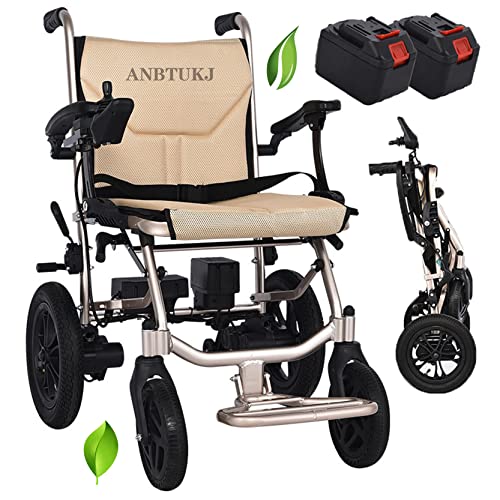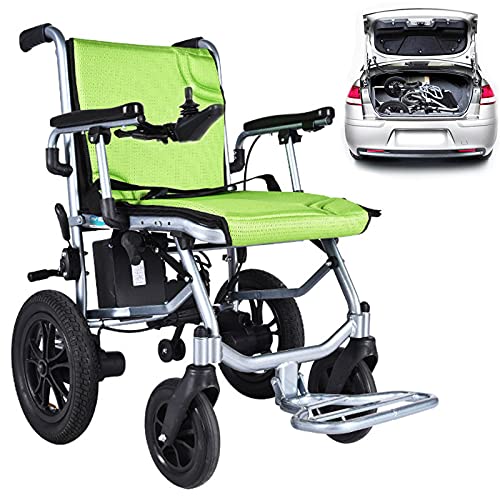10 Wrong Answers To Common Electric Wheelchair With Joystick Questions…
페이지 정보
작성자 Dillon Paltridg… 댓글 0건 조회 2회 작성일 24-11-22 07:13본문
 Electric Wheelchair With Joystick
Electric Wheelchair With Joystick Power wheelchairs with joysticks can significantly improve independence and ease of use. Standard joysticks are not able to accommodate the unique characteristics of hand disorders.
Power wheelchairs with joysticks can significantly improve independence and ease of use. Standard joysticks are not able to accommodate the unique characteristics of hand disorders.This study assessed the efficacy and satisfaction of customized power wheelchair Joysticks manufactured with 3D printing. Evaluation was conducted using the modified power-mobility assessment (PIDA), National Aeronautics and Space Administration Task Load Index, and Psychosocial Impact of Assistive Devices Scale.
Control
The control system of a power chair includes two important components: the joystick, and the electronics. Standard joysticks often mount to either the left or right side of the chair, while more complex rehab chairs may have swing away mounts that allow the joystick to be positioned in the middle of the seat.
The way that a joystick is placed and operated will play an important role in determining whether it can be effective for a specific user. For instance when a person has a significant amount of tremors, then it is essential to ensure that the joystick is constructed in such a way that these movements do not trigger accidental activations of the chair. Standard EPW joysticks use proportional input devices that react to the deflection amount of the gimbal in order to control the chair's motion (similar to the video game controller or an accelerator in a car pedal).
There are a myriad of alternative control options for power wheelchairs, that require a minimum of force to activate. These include switches sip and puff control head array systems, and chin control. Some of these controls require an additional interface to connect to the wheelchair. However, many of them can be used with new joysticks that incorporate Bluetooth into the handles.
Some wheelchair joysticks have a screen to show the status of the system and provide feedback to the user, which is particularly beneficial for people with visual or cognitive impairments. Certain advanced joysticks are able to control various accessories that include environmental controls, a TV and tablet.
Regardless of the technology the joystick is as effective if it is comfortable for the user operate. It is therefore crucial to think about the size of the buttons and their location on a joystick to make them easy to access. Also, it is essential to consider the sensitiveness of the joystick which can be adjusted to a variety of levels according to the needs of each individual client.
Comfort
A joystick-carer controlled electric wheelchair power chair offers many benefits that aren't offered by manual chairs. They can reduce fatigue caused by operational issues and are able to travel further than manual-operated chairs. They can also be used in places with less space and more difficult terrain than a manual wheelchair, such as uneven surfaces or slopes in the outdoors. This additional independence gives users the freedom of movement and a feeling of freedom.
A variety of different powered wheelchairs are available in an array of options. The quantity of bells and whistles a particular model features will depend on what the user wants and requires. Some of the most commonly used features include:
The control options on an electric wheelchair equipped with a joystick is possible to meet individual needs. This includes the type of knob or handle, or ball, and the way it is mounted. Joysticks are usually located on the armrest of the driver's seat, while others are placed on the rear or front of the seat to make it easier for the attendants to reach. Some joysticks can be positioned on the side for people with limited shoulder range or muscular weakness.
Other features are more personalized like the design and size of the joystick's display. Certain models are backlit or have the color of the screen, which makes it easier for people with poor vision to read. Other models provide additional modes that provide visual or audio cues for navigation. They can also offer clocks, odometers and indicator of battery charge.
The ability of a joystick to move in a small turning radius is also crucial. The best models will have a small turning radius, which makes it easier to navigate obstacles and narrow spaces such as hallways. The narrow turning radius makes it easier to maneuver in public areas and stores. This narrow turning radius is particularly useful for people with mobility issues such as cerebral palsy, MS, ALS Huntington's disease spinal cord injury or brainstem stroke.
Safety
Power wheelchairs have been created with safety as the top priority. They are equipped with reliable brake systems that reduce speed quickly when the consumer presses the joystick control lever. The chairs are also equipped with anti-tip rear wheels to prevent the chair from tipping forward.
The most common joystick type is one that is proportional. It is similar to video game controllers as well as accelerator pedals for cars in that it accelerates the wheelchair the further it is away from the center. These kinds of joysticks require proprioception as well as finger dexterity to operate efficiently. Standard joysticks are mounted on the armrest. However there are many specialty controls that mount the control on the side or middle of the seat.
Some people may not have the strength to withstand the force of a joystick even with the aid of special rigging. This may be the case with some people who suffer from spasticity, which can cause muscles to become stiff or deteriorate (atrophy). In these cases, it may be better to utilize a head-control unit that converts the movements of the consumer's body into the required commands for the wheelchair.
Another aspect to consider is the size and placement of the joystick's buttons. If the buttons are too far in the front or difficult to reach, they could interfere with the position of the user and cause a strain on the hands. On the other hand when the joystick is too far backward it may be difficult to turn the wheels or move the chair into tight spaces.
Lastly, an bariatric electric wheelchair uk wheelchair must always be used with the seatbelt fastened. Seatbelts must always be fastened when using an lightest electric wheelchair uk wheelchair wheels (just click the following web site) wheelchair. The fastest wheelchairs can travel as fast as 8mph. It is also essential to ensure that batteries are charged regularly, every night, if it is possible. This will help them to last longer and help maintain their effectiveness. It's also an excellent idea to schedule regular maintenance for your chair to make sure all terrain electric wheelchair uk components are functioning properly.
Accessories
Joysticks are the most important component of power wheelchairs. They can be upgraded by adding a variety. These range from basic switches to more advanced interfaces that connect to communication devices or even external environmental control units. The higher-end power wheelchairs usually include a variety of controller components that are able to meet the requirements of different users. For instance an unexpandable controller will typically only accept a proportional joystick as an input device. However, an expandable controller may allow for sip and puff controls, special switches, and head array systems. Some of the advanced controllers are capable of operating up to two power seating actuators that can alter the direction and angle of the seat.
The most basic kind of joystick used in the clinic is an inverse control, often called a motion sensing joystick. This type of joystick like accelerator pedals for cars and video game controllers responds to the force that is exerted on the stick by increasing its output (i.e. the speed of the wheelchair) the further the stick is moved from center. This requires a lot of dexterity and a healthy sense of proprioception to be able to use it effectively.
The technology that is used today can compensate for small movements in amplitude during EPW driving. However, it is unable to detect and adjust for many more serious unintentional movements, such as those that result in higher amplitude tremors or involuntary movements not caused by conscious intent, such as athetosis.
Most wheelchairs have a range of parameters that can be programmed or customized usually with the assistance of a medical professional. These parameters include changing the torque generated by the motor, altering the speed of the chair and setting the dead zone which is the amount within which the EPW cannot produce an output. Some controllers also be able to store backup programs, which are handy for a doctor to have on hand in case in an emergency, or for patients with varying symptoms.
댓글목록
등록된 댓글이 없습니다.
